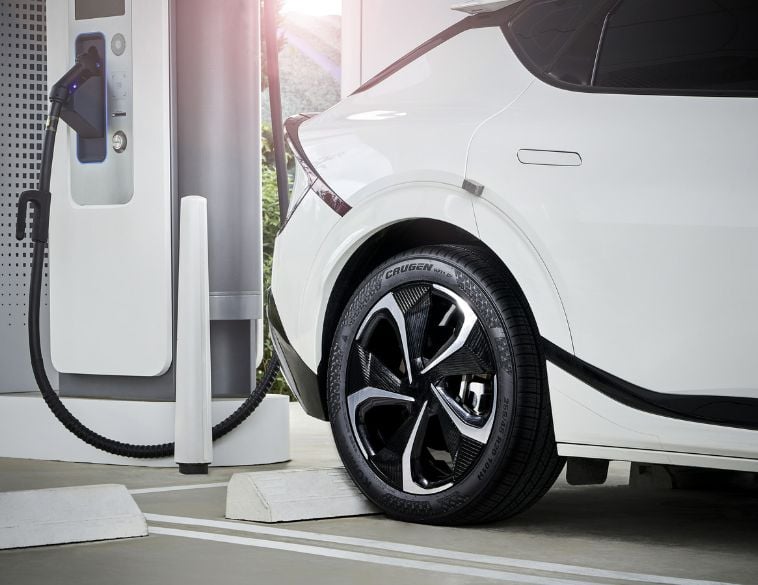There’s no question that a big part of the luxury auto experience is a quiet ride, but it can be difficult to achieve when the vehicle’s characteristics call for performance tires. Hankook says it has addressed the problem with its new Sound Absorber technology, which will be used on OE tires for Audi’s Q model line.
Hankook says the technology is currently only available in its Ventus S1 evo. SUV, but is in the process of applying it to other sizes and products. These will mainly be UHP tires with low aspect ratios.
Tire noise can stem from a variety of factors, including compound, construction, and tread pattern. In this case, the issue is increased cavity noise that’s typical for lightweight, low-profile tires.
Less noise with no fuel efficiency loss
To help deal with the cavity noise, the Sound Absorber technology uses a noiseabsorbing polyurethane foam inlay sheet that’s bonded to the inside of the tire usingSealguard material. Hankook says the technology reduces the tire’s noise by more than five decibels, which in turn gives drivers the impression that on-road noise has been reduced by more than 50 percent.
The internal foam pad increases the tire’s weight by 450 grams, but Hankook says because it’s placed inside the tire, instead of engineered into the tread or sidewall, it doesn’t affect fuel efficiency.
Quiet tires enhance driving
The system isn’t unique to Hankook, and similar foam pad inlay solutions are used in Pirelli’s Noise Cancelling System and Continental’s ContiSilent. While “quiet” tires are more about enhancing the driving experience in our market, they’re part of government mandates in Europe. There are limits on tire noise there, and tire labels in the European Union must indicate fuel efficiency, wet grip, and noise.
Without such labelling, dealers here have to get the benefits across to customers, especially since many drivers assume that any tire that gives them the grip and performance they want will, in a UHP model, also come with that typical cavity noise. Since the pad is internal, with no changes to the tire’s construction or tread, the tire should deliver the same level of driving functionality, just with less noise.
Selling the sound
When selling customers on these types of low-noise tires, it’s important for them to understand why the internal pad is there, especially since many think tire noise comes only from the tread. But the air chamber can resonate and create a thrumming noise when the tire rolls, which the pad helps to eliminate.
It could be a tougher sell, since unlike something like a tread pattern, you can’t actually show the customer the sound difference in the showroom. But by knowing how tires with technology like the Sound Absorber work, you can advise them on what they can do to keep the luxury experience sounding luxurious.


